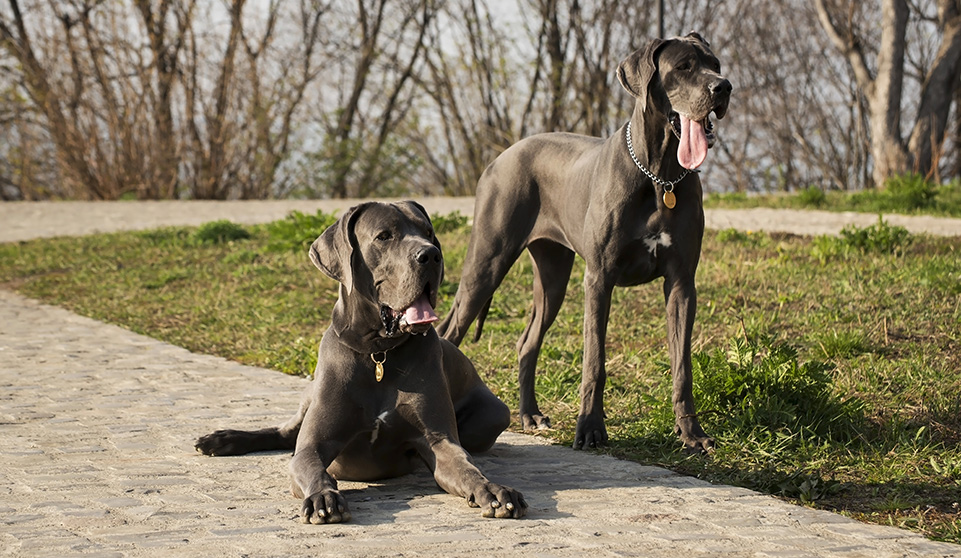Great Dane Information

History
The Great Dane dates back to the 14th century, when it was used a boar hunter and bull baiter.
This powerful dog was developed primarily in England and Germany by cross breeding the Greyhound with the English Mastiff.
In the 17th century, they become very sought after and were being bred in large numbers. Many of Germany’s affluent would take the tallest, most intimidating dogs and keep them at their estates.
They have been hugely popular in Germany ever since and became their official national dog in 1876.
Characteristics
- Giant
- Powerful
- Courageous
- Loyal
- Affectionate
Great Dane Temperament & Size
The Great Dane is one of the largest breeds in the world. It has a short smooth coat that can be seen in a variety of colours including fawn, blue, black, brindle and harlequin (merle).
They have an affectionate, pleasant nature and are good with children. However, exercise caution around toddlers as due to their size they may knock them over.
Also, early socialisation and consistent, confident training is paramount to avoid any behavioural problems.
Care is required if you intend to breed these dogs. If you breed harlequins or merles together, about 25% of the puppies will either be born dead or have serious defects including blindness or deafness.
Great Dane Life Span & Health Problems
Average lifespan of 7 – 9 years.
Common Illnesses include;
- Hip Dysplasia – Genetic condition that cause abnormal development of the elbow and hip joints in young dogs. This can lead to early onset degenerative joint disease.
- Osteochondosis dissecans (OCD) – Developmental disorder where flaps of cartilage run against tissue causing irritation, pain, lameness and eventual degenerative joint disease. If severe enough, this can require surgery.
- Bloat (Gastric Dilatation Volvulus, GDV) – Twisting of the stomach resulting in rapid swelling of the abdomen causing pain and eventual death if not treated.
- Dilated Cardiomyopathy – Poor contractility of the heart muscle leads to arrhythmias and congestive heart failure.
- Panosteitis – Excessive bone production in long bones of young dogs resulting in shifting lameness.
- Hypothyroidism – Underactive thyroid gland causing obesity, lethargy, ear infections and skin problems.
- Addisions’s Disease – Underactive adrenal glands causing life threatening electrolyte imbalances and kidney disease.
- Wobbler’s Syndrome – Pressure to the spinal cord in the area of the dog’s neck causing a range of signs from altered gait to paralysis.
